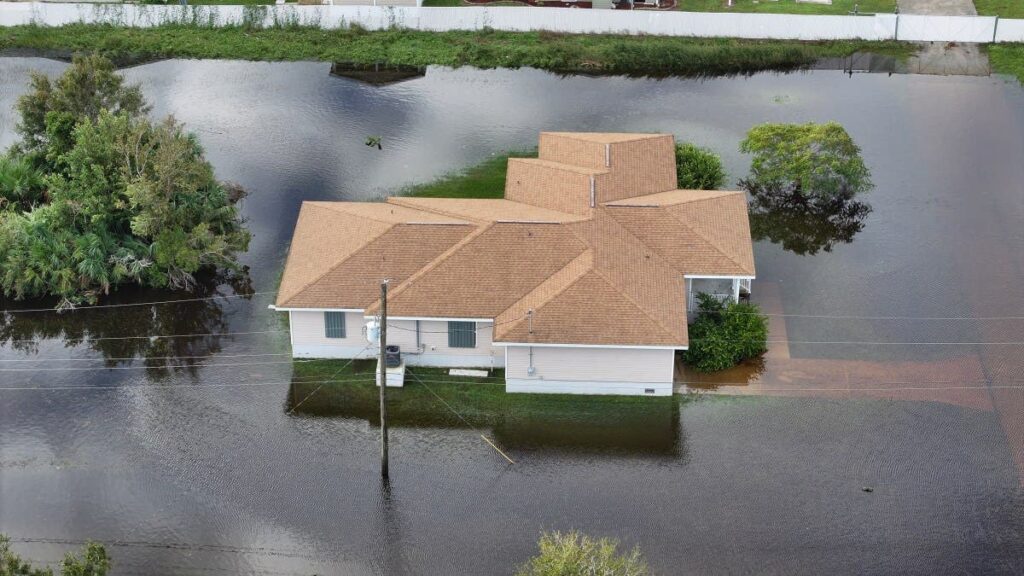Funding authorization for a federal program providing flood coverage to millions of Americans across the country is set to expire on September 30, unless Congress extends it before the looming deadline.
The National Flood Insurance Program (NFIP), administered by the Federal Emergency Management Agency (FEMA), provides $1.3 trillion in flood coverage to about 4.7 million policyholders among homeowners, renters, and businesses.
If the program is allowed to expire, as the standoff between Republicans and Democrats in Congress remains unsolved as of Monday morning, millions could be affected—including homeowners who would not be able to get coverage at a time when disaster season is intensifying.
“Allowing the NFIP to expire will move us in the wrong direction at the worst time,” said the Insurance Fairness Project in a statement shared with Newsweek.
America’s Flood Insurance Gap
Flooding is one of the most frequent and most costly natural disasters facing the nation, according to federal authorities, threatening both areas at high-risk as well as those at moderate-to-low-risk.
A 2024 study by the Joint Economic Committee found that flooding costs the nation between $179.8 and $496 billion each year. Nearly one-third (32 percent) of NFIP flood insurance claims, according to federal data, come from outside high-risk flood areas.
Crucially, flood coverage is not included in traditional home insurance policies, which means that many homeowners all across the country go without. According to federal data, 99 percent of U.S. counties have been impacted by flooding since 1999. However, only 4 percent of homeowners have flood insurance.
In this environment, FEMA and the NFIP can be hugely important to homeowners affected by flooding. The program, set up in 1968 and backed by taxpayers, offers up to $250,000 for homes and $500,000 for nonresidential buildings to those living in one of the roughly 22,600 communities adhering to standards set by NFIP and FEMA.
But the program only covers a fraction of the costs Americans often face after a natural disaster. The cost of flood insurance in the private market, meanwhile, has risen in recent years, becoming unaffordable for many.
Another Blow to FEMA and NFIP
Congress’ failure to extend NFIP could make this dire situation even worse. “For years now, dysfunction in meeting September 30 deadlines has created uncertainty for NFIP and delays in disaster relief just as disaster season is intensifying,” said Jordan Haedtler, a spokesperson for the Insurance Fairness Project, in a statement shared with Newsweek.
“Federal cuts to FEMA and NOAA have already inflicted huge costs on communities and threatened the availability of insurance throughout the country,” he said. “A lapse in the NFIP would make our climate-driven insurance and housing affordability crisis even worse.”
First, new flood insurance policies will not be issued, and existing policies will not be eligible for renewal. NFIP policies that were entered into before September 30 will remain in effect until the end of their one-year term.
Second, real estate transactions in flood plains, according to the Insurance Fairness Project, will be frozen.
Third, the NFIP’s ability to borrow from the U.S. Treasury will be slashed from $30.425 billion to $1 billion, significantly limiting the program’s ability to pay claims in the event of a major disaster.
The program has been in debt for a long time now. While the program had a $16 billion debt forgiven in 2017, its total debt has once again ballooned to over $22.5 billion. Earlier this year, it borrowed $2 million from the U.S. Treasury to help cover claims linked to Hurricanes Helene and Milton.
A major hurricane has yet to make landfall this year. However, this has been a devastating year in terms of flooding in America. The National Weather Service has already issued more than 4,000 flash flood warnings so far in 2025, setting a record in U.S. history. More than 130 people, including many children, died in Texas this summer when the Guadalupe River burst its banks.
A Looming Government Shutdown
The nation is facing a government shutdown at midnight on Tuesday, unless Republican and Democrat leaders in Congress and the Senate agree to a deal that would allow the funding bill to move forward and be signed into law.
The two parties have found themselves at odds over what to include in the funding bill. Democrats want the stopgap bill to include health care protections, including extensions of enhanced premium tax credits under the Affordable Care Act set to expire by the end of 2025. Republicans want to pass the bill without these Obamacare tax credits, and have refused to make concessions to Democrats for the past several weeks.

President Donald Trump is set to meet with top Democratic and Republican congressional leaders at the White House on Monday to find a way to keep the government funded and running. Senate Minority Leader Chuck Schumer, D-N.Y., and House Minority Leader Hakeem Jeffries, D-N.Y., House Speaker Mike Johnson, R-LA, and Senate Majority Leader John Thune, R-S.D., are set to attend.
“President Trump has once again agreed to a meeting in the Oval Office,” Jeffries and Schumer said in a joint statement issued on Saturday. “As we have repeatedly said, Democrats will meet anywhere, at any time and with anyone to negotiate a bipartisan spending agreement that meets the needs of the American people. We are resolute in our determination to avoid a government shutdown and address the Republican health care crisis. Time is running out.”
Read the full article here














